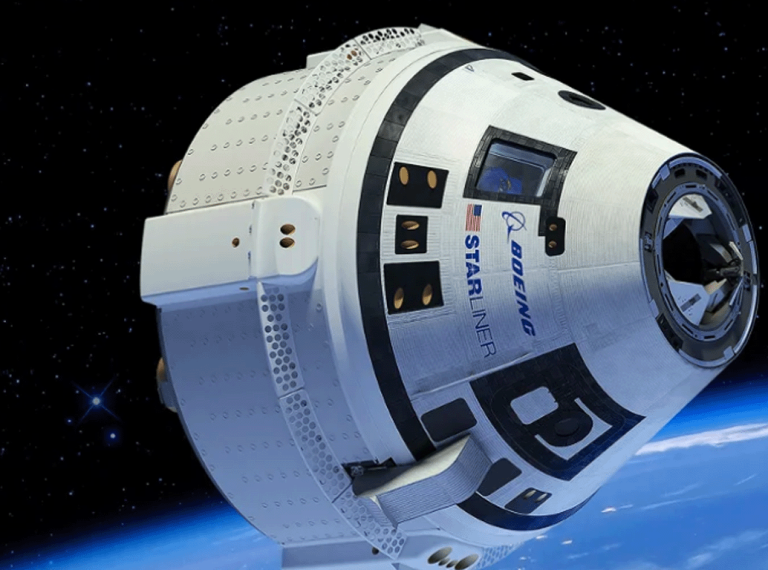Boeing CST 100
Key Takeaway
The Boeing CST-100 Starliner is a significant advancement in space transportation, developed to ferry astronauts to and from the International Space Station (ISS) as part of NASA’s Commercial Crew Program. Despite facing setbacks such as technical issues and delays, the project emphasizes the importance of safety, demanding testing, and collaboration between NASA and Boeing.
Summary
- Development Purpose: Provide safe, reliable, and cost-effective transportation for astronauts.
- Design and Technology: Incorporates decades of aerospace expertise and cutting-edge technology.
- Uncrewed Test Flights: Conducted two uncrewed test flights to validate capabilities.
- Collaboration with NASA: Partnership integral to development and certification.
- Safety Over Schedules: Delays due to technical issues highlight priority on safety.
- Astronaut Preparedness: Ongoing quarantine and training adjustments for astronauts.
- Technical Challenges: Addressing helium leak in a thruster before crewed missions.
- Commitment to Success: Ensuring thorough assessments and preparations for mission readiness.
Development and Purpose
Boeing embarked on the journey of creating the CST-100 Starliner with the goal of providing safe, reliable, and cost-effective transportation for astronauts. The spacecraft’s design draws upon decades of aerospace expertise, incorporating cutting-edge technology to ensure optimal performance in the demanding environment of space. The Starliner is part of NASA’s Commercial Crew Program, which aims to restore American capability to launch astronauts from U.S. soil, ending reliance on Russian Soyuz spacecraft.
Design and Technology
The CST-100 Starliner features a reusable crew module and an expendable service module, designed for up to ten missions. Its design includes:
- Advanced Avionics: For improved navigation and communication.
- Boeing Lightweight Ablator (BLA): A heat shield technology for re-entry.
- NASA Docking System (NDS): For compatibility with various space stations.
- Launch Abort System (LAS): To ensure crew safety during ascent.
The Starliner is compatible with multiple launch vehicles, including the Atlas V, which enhances its versatility.
Uncrewed Test Flights
The CST-100 Starliner has undergone rigorous testing to validate its capabilities and readiness for crewed missions. Two uncrewed test flights have been conducted thus far:
- Orbital Flight Test-1 (OFT-1): Launched in December 2019, encountered issues with its mission clock, preventing docking with the ISS.
- Orbital Flight Test-2 (OFT-2): Conducted in August 2021, successfully docked with the ISS, demonstrating significant progress and success.
These tests are crucial for refining the spacecraft’s systems and operations.

Collaboration with NASA
Boeing’s partnership with NASA has been integral to the development and certification of the Starliner spacecraft. Through the Commercial Crew Program, NASA has provided funding and expertise to support Boeing’s efforts in advancing human spaceflight capabilities. This collaborative endeavor reflects a shared commitment to pushing the boundaries of space exploration.
Safety Over Schedules
The first astronaut mission aboard Boeing’s Starliner has faced indefinite delays due to a small helium leak in a thruster. This issue stresses the commitment to safety over schedule adherence. NASA and Boeing teams have been conducting thorough assessments to address the issue and ensure mission readiness.
Statements from Astronauts: Astronauts Butch Wilmore and Suni Williams, who were slated to fly aboard the Starliner, emphasized the importance of safety. Drawing on their experience as former U.S. Navy test pilots, they understand the significance of accurate preparation in ensuring mission success.
Boeing has provided an explanation regarding the helium leak, indicating that additional time allows teams to further assess and develop operational procedures. The stability of the leak and its potential impact on mission performance are being carefully evaluated.
The delay has necessitated the continued quarantine of astronauts Butch Wilmore and Suni Williams, affecting their training schedules. Prolonged delays may require adjustments to training duties and schedules. The astronauts remain committed to their preparations, highlighting the importance of flexibility and resilience in space missions.
Next Steps and Final Determination
As assessments and preparations continue, NASA’s Commercial Crew Program and the International Space Station Program will review the data to make a final determination before proceeding with the flight countdown. Ensuring the safety and success of the mission remains paramount.
Table 1: Status Update on Boeing CST-100 Starliner Astronaut Mission
| Update | Details |
|---|---|
| Issue | Small helium leak in a thruster |
| Current Status | Indefinite delay pending assessments |
| Priority | Safety over schedule adherence |
| Astronaut Response | Emphasis on safety in statements |
| Remediation Efforts | Technical assessments and procedure development |
| Impact on Training | Continued quarantine and potential schedule changes |
The Commercial Crew Program represents a significant shift in NASA’s approach to space transportation. By partnering with private companies like Boeing, NASA aims to promote innovation, reduce costs, and enhance capabilities. The success of the CST-100 Starliner is crucial for achieving these goals.
Despite the current delays, the future of the CST-100 Starliner remains promising. Once operational, the Starliner will:
- Transport astronauts to the ISS: Supporting ongoing research and maintenance.
- Enable private space missions: Offering transportation for commercial astronauts.
- Contribute to lunar and Mars missions: Serving as a component in broader exploration strategies.
Table 2: Key Milestones for CST-100 Starliner
| Milestone | Date | Description |
|---|---|---|
| First Uncrewed Test | Dec 2019 | OFT-1, partial success, issues with mission clock |
| Second Uncrewed Test | Aug 2021 | OFT-2, successful docking with ISS |
| First Crewed Flight | TBD | Indefinite delay due to helium leak |
| Operational Flights | Future | Regular missions to ISS and beyond |
Conclusion
While setbacks are inevitable in the pursuit of space exploration, the resolve and dedication of NASA, Boeing, and the astronauts involved remain unwavering. By prioritizing safety and conducting thorough assessments, the teams are demonstrating their commitment to ensuring the success of the first crewed mission aboard the Boeing CST-100 Starliner. As preparations continue and challenges are addressed, the mission draws closer to its ultimate goal of advancing human spaceflight capabilities and expanding our understanding of the universe.


